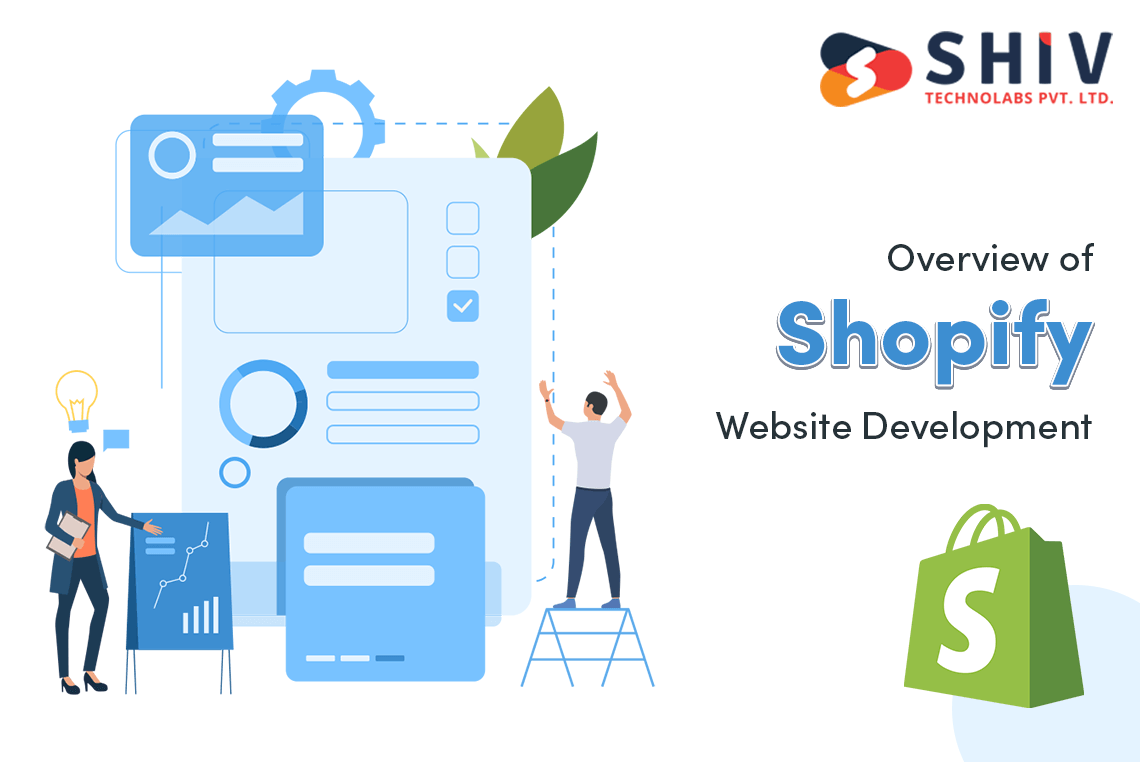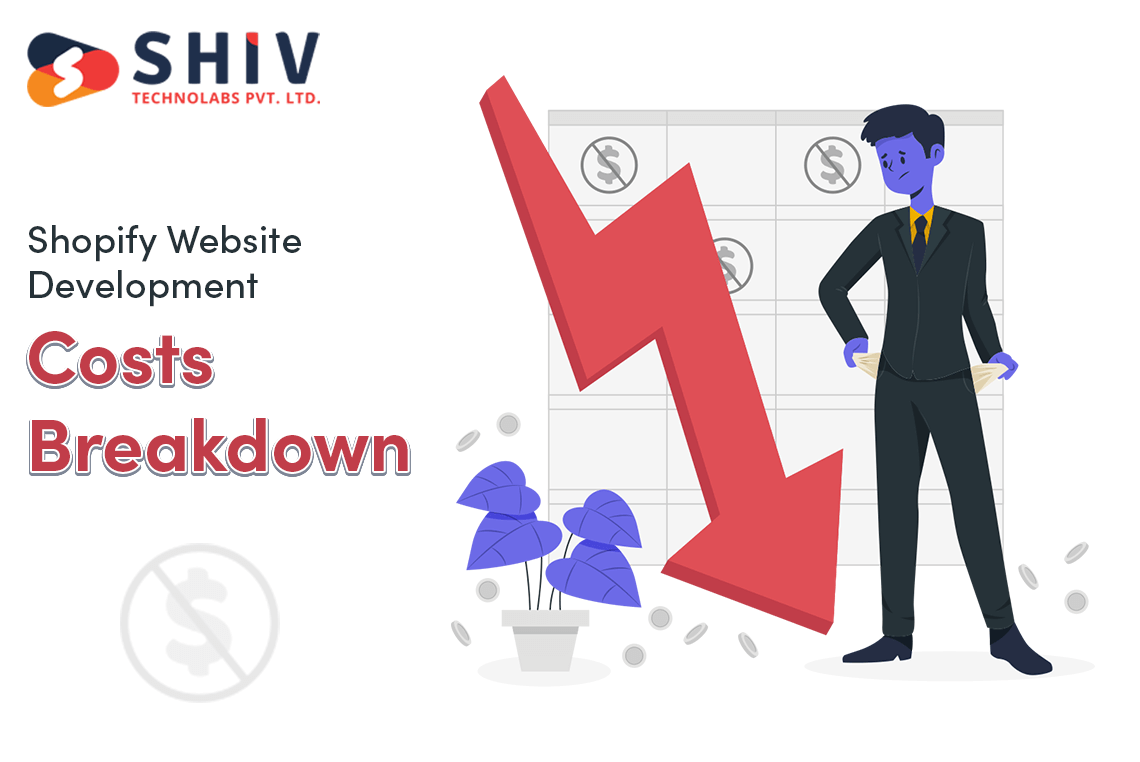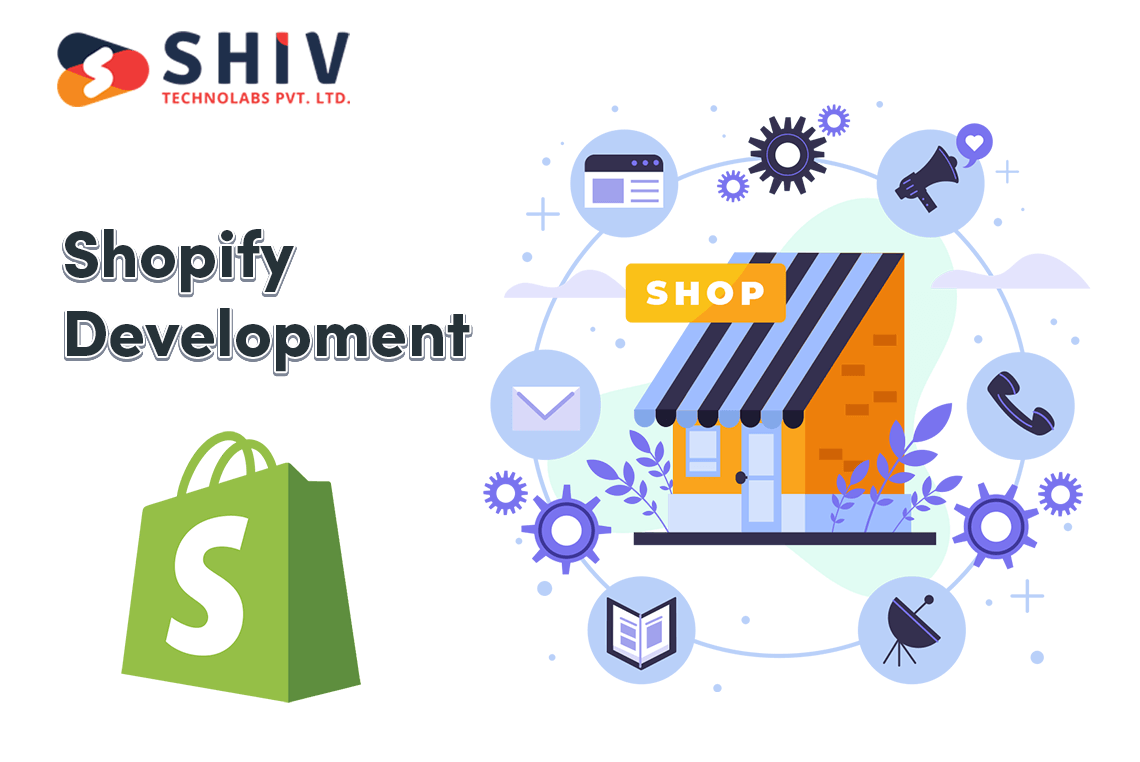Table of Contents
Looking to build a Shopify store? You’ll want to get an idea of how much it might cost you. After all, launching a successful Shopify business requires careful planning and a budget. For that reason, it’s important to be aware of the costs associated with setting up and maintaining your Shopify store.
In this blog, you’ll learn about the price range for setting up a Shopify store, the different ways you can pay for your shop, and services that can help make developing your shop easier. We’ll cover all the necessary pieces from development to launch and beyond in order to give you an understanding of what investments are necessary.
This guide will provide you with details on what goes into making a successful Shopify store, so read on for everything you need to know about Shopify development costs.
Overview of Shopify Website Development

When you’re considering developing an eCommerce site, Shopify is often one of the first choices that comes to mind. That’s because it offers a comprehensive, integrated platform of everything you need to run an online business, from hosting, domain registration, payments and more.
But how much exactly does Shopify website development cost? Price is one of the key factors that businesses consider when deciding between platforms, so understanding how much it costs to build your own store on Shopify is important. There’s no single answer; rather, your overall costs will depend on what specific features and functionalities you need for your website.
Here, we’ll take a look at the different elements and factors that contribute to Shopify development costs and provide you with some tips to help keep your development costs in check.
Cost Factors to Consider While Building a Shopify Store
When you are considering hiring a Shopify developer, you may be tempted to shop around solely based on price. However, there are many factors that can affect the cost of developing a Shopify store.
Here are some key cost factors to consider:
- Project scope: What features will be included in your Shopify store? Will you need custom coding or integration with other tools and services? Answering these questions will help give you an accurate idea of how complex your project is and how much it will likely cost.
- Design costs: Do you need a custom design for your store or can you use pre-made themes? Your choice will have an impact on the overall cost of development, so be sure to factor this in.
- Developer rates: Different developers charge different rates, so be sure to compare them to find the best deal.
- Maintenance costs: Depending on your needs, you may require ongoing maintenance once your store is live. This can add an additional cost to the equation when budgeting for Shopify development.
By understanding these key cost factors, you’ll be able to figure out a realistic budget for your Shopify store development project.
Shopify Website Development Costs Breakdown

Understanding the cost of developing a Shopify website is essential before you plan your online store. The total expense depends on design complexity, number of features, store type, and development region.
Below is a detailed breakdown to help you estimate your budget clearly.
1. Shopify Website Development Cost Overview
The first step is to understand the broad range of costs based on the type of Shopify store you want to build. Smaller stores focus on setup and theme adjustments, while larger ones need custom functionalities and integrations.
| Store Type | Estimated Cost (USD) | Timeframe | Key Highlights |
| Basic Shopify Website | $2,000 – $5,000 | 2–4 weeks | Theme setup, basic pages |
| Custom Shopify Store | $5,000 – $12,000 | 4–6 weeks | Custom UX/UI, integrations |
| Advanced Shopify Store | $12,000 – $25,000 | 6–10 weeks | APIs, automations, custom modules |
| Shopify Plus | $25,000+ | 10–14 weeks | Enterprise-grade setup, ERP/CRM link |
A quick view like this helps readers understand what level of investment to expect depending on their business size and scalability goals.
2. Breakdown of Shopify Website Development Costs by Stage
Every development project follows structured stages — from planning and design to testing and deployment. Each phase adds specific value and influences the total cost.
| Stage | Description | Approx. Cost (USD) |
| Planning & Consultation | Project scope, wireframes, sitemap | $300 – $800 |
| Design & UI/UX | Brand visuals, mockups | $1,000 – $3,000 |
| Development & Setup | Shopify setup, custom coding | $2,000 – $7,000 |
| Integrations & Apps | Payment, shipping, analytics | $500 – $2,000 |
| Testing & QA | Cross-device and browser testing | $300 – $1,000 |
| Launch & Support | Deployment and minor tweaks | $200 – $800 |
Having this stage-wise breakdown allows you to allocate budgets smartly and avoid hidden costs during execution.
3. Shopify Website Development Cost by Country
Geographical location plays a significant role in determining hourly rates and overall project pricing. Developers in different regions charge based on market demand, skill level, and local economy.
| Region | Hourly Rate (USD) | Typical Project Cost | Project Duration |
| USA / Canada | $80 – $150 | $8,000 – $25,000 | 4–10 weeks |
| UK / Europe | $60 – $120 | $6,000 – $20,000 | 4–9 weeks |
| Australia | $70 – $130 | $7,000 – $18,000 | 4–8 weeks |
| India | $25 – $60 | $3,000 – $10,000 | 3–6 weeks |
| UAE / Middle East | $60 – $110 | $6,000 – $15,000 | 4–7 weeks |
This comparison helps businesses decide whether to hire locally or outsource development to a region that aligns with their budget and expectations.
4. Shopify Plan-Based Cost Breakdown
In addition to development, Shopify’s official subscription plans also contribute to your total investment. Each plan offers distinct features and transaction fees.
| Plan | Monthly Fee | Transaction Fee | Features | Suitable For |
| Basic | $29 | 2.9% + 30¢ | Basic reports, 2 staff accounts | New sellers |
| Grow | $79 | 2.7% + 30¢ | Professional reports | Growing brands |
| Advanced | $299 | 2.5% + 30¢ | Advanced analytics | Scaling stores |
| Plus | From $2,300 | Custom | Enterprise-level controls | High-volume brands |
By understanding Shopify’s plan structure, you can align platform fees with your store’s development costs to get a complete financial picture.
5. Shopify Feature-Based Development Cost
Adding specific features to your store can directly influence pricing. Some businesses need simple add-ons, while others require advanced automation or AI integration.
| Feature | Description | Estimated Cost (USD) |
| Multi-Currency Setup | Sell globally with localized checkout | $200 – $600 |
| Subscription Model | Enable recurring payments | $800 – $1,800 |
| Custom Checkout | Tailored checkout process | $500 – $1,500 |
| Product Configurator | Let users personalize items | $1,500 – $3,000 |
| Loyalty Program | Build retention and rewards system | $800 – $1,500 |
| AI Chatbot / Personalization | Smart product recommendations | $1,000 – $3,500 |
Estimating feature-wise costs gives clarity on where to invest for maximum user engagement and conversion impact.
6. Theme Customization vs. Custom Development
One of the biggest cost differences comes from your development approach. Using a pre-built theme reduces expenses, while custom or headless builds demand higher investment but offer greater flexibility.
| Type | Description | Cost Range (USD) | Duration | Best For |
| Theme Setup | Modify existing Shopify theme | $1,000 – $4,000 | 2–3 weeks | Startups |
| Custom Design | Build unique layout & design | $5,000 – $15,000 | 4–8 weeks | Established brands |
| Headless Storefront | Advanced frontend (Hydrogen, React, etc.) | $10,000 – $25,000 | 8–12 weeks | Enterprise stores |
Choosing the right approach early helps avoid redesign costs later and ensures your store aligns with brand identity.
7. Shopify App Integration Cost Breakdown
App integrations are essential for extending store capabilities — from payment gateways to marketing and ERP tools. Each integration has its own cost range and development time.
| App Type | Purpose | Estimated Cost (USD) | Duration |
| Payment Gateways | Stripe, PayPal, Razorpay | $100 – $400 | 1 week |
| Marketing Tools | Klaviyo, Mailchimp | $200 – $800 | 1–2 weeks |
| Inventory Tools | TradeGecko, Cin7 | $500 – $1,500 | 2 weeks |
| CRM / ERP Integration | HubSpot, Odoo, Zoho | $1,500 – $5,000 | 3–5 weeks |
Knowing these app integration costs helps you budget efficiently and prioritize what’s necessary for your initial launch.
8. Migration to Shopify – Cost Overview
If you’re moving from another platform, migration costs depend on data volume, design complexity, and required re-development. Below are typical estimates based on source platforms.
| Platform | Migration Type | Cost Range (USD) | Timeframe |
| WooCommerce | Products & orders | $800 – $2,000 | 1–2 weeks |
| Magento | Full rebuild & theme migration | $3,000 – $7,000 | 3–5 weeks |
| Wix / Squarespace | Product migration only | $500 – $1,200 | Less than 1 week |
These ranges can vary if you require data cleanup, URL redirects, or additional SEO adjustments during migration.
9. Ongoing Shopify Maintenance & Support Cost
Once your website goes live, regular maintenance keeps performance stable and prevents technical issues. Monthly support ensures security, feature updates, and marketing consistency.
| Service | Description | Monthly Cost (USD) |
| Basic Maintenance | Bug fixes & small updates | $100 – $300 |
| Full Support | Feature updates, audits, performance | $400 – $800 |
| Marketing & SEO | Campaigns and analytics | $500 – $1,200 |
Allocating a monthly maintenance budget helps maintain long-term growth and avoids expensive emergency fixes later.
Different Pricing Models for Your Project
When it comes to Shopify Website Development Costs, you need to be aware of the different pricing models that are out there. Each model has its own set of advantages and disadvantages, so it’s important to think about the project objectives and budget before deciding which one is right for you.
1. Fixed Price
One popular pricing model is the fixed-price model. With this type of pricing, a fixed budget is agreed upon at the start of the project for all work that needs to be done, including design, coding, testing and launch. This ensures complete transparency between you and the development agency – making sure you never go over budget on your project.
2. Time & Materials Model
The time & materials model offers clients additional flexibility in terms of what they need from their development team. It usually involves an agreement between the client and agency as to how many hours will be worked on each aspect of the project as well as what fees will be paid for those hours (based on a pre-agreed hourly rate). This type of model can work better if there are a lot of unknowns in your project’s development requirements or if changes are requested during the process.
3. Agile Methodology
Agile methodology is a popular approach when it comes to software development projects – especially Shopify projects due to its flexibility. This method works on sprints (or phases) which allows for stakeholders from both sides to review progress regularly – rather than at one big presentation or handover moment – making it easier to manage costs (as changes can be made earlier). After each sprint a new budget is set for the next phase and this process continues until the entire project is complete
Conclusion
Shopify Development Costs depends largely on the complexity and size of your project, with costs ranging from a few hundred dollars to tens of thousands. The most cost-efficient way to go is to find an experienced Shopify development partner, reliable developers, and experienced designers.
Whether you’re buying a theme, hiring a Shopify partner, or doing the development yourself, the key to success is to consider what will be the most cost-effective option for the long term. Whichever path you choose, the end result should be a well-crafted, high-quality eCommerce website that will generate a positive return on your investment.
Frequently Asked Questions (FAQs)
How much does Shopify cost per month?
Shopify’s pricing starts at $29 per month for the Basic plan. The Shopify plan costs $79 per month, and the Advanced plan is $299 per month. For large enterprises, Shopify Plus starts around $2,300 per month, depending on the contract and features included.
Are there additional fees beyond the monthly plan?
Yes. In addition to the subscription fee, Shopify charges credit card processing fees for online transactions — typically between 2.9% + $0.30 and 2.5% + $0.30, depending on your plan.
If you use a third-party payment gateway instead of Shopify Payments, you may also pay a transaction fee. You should also consider costs for themes, apps, custom development, and maintenance.
Can I switch or downgrade my Shopify plan later?
Yes. You can upgrade, downgrade, or change your plan anytime from the Shopify Admin. When you switch plans, your store data, products, and design remain intact, so you can easily adjust as your business grows.
Does Shopify have a free trial, and will I lose data if I sign up mid-trial?
Yes — Shopify offers a free trial for new users. If you decide to upgrade to a paid plan during your trial, all the data and setup work you completed will be preserved. This helps you test the platform before committing to a subscription.
What’s the difference between Basic, Shopify, Advanced, and Plus plans?
Each plan differs in terms of features, reports, and transaction rates.
- Basic is ideal for new or small businesses.
- Shopify provides professional reports and more staff accounts.
- Advanced includes advanced reporting and lower fees.
- Shopify Plus offers enterprise-grade scalability and dedicated support.
- How much does custom Shopify development cost?
Custom development costs depend on the store’s complexity. A small business website may cost $2,000–$5,000, while custom or enterprise-grade stores can go up to $25,000 or more. Factors like design, app integration, and functionality directly affect the total cost.
Will I incur costs for Shopify apps or plugins?
Yes. While some apps are free, many premium apps require a monthly or one-time fee. Prices typically range from $10 to $200 per month, depending on the functionality — such as marketing tools, loyalty programs, or advanced reporting features.
If I migrate from another platform, what extra costs should I expect?
Migration costs depend on your current platform and data volume. You might need to pay for data migration, design adjustments, SEO redirects, and in some cases, theme redevelopment. On average, migration can cost between $800 and $5,000, depending on store size and structure.
What is the average time to develop a Shopify website?
The timeline varies based on project scope.
- A basic store can take 2–4 weeks.
- A mid-level custom store takes around 4–8 weeks.
- A large enterprise store or Shopify Plus project may require 10–14 weeks, including testing and integrations.
Do I need a developer to manage my Shopify store after launch?
Not always. Shopify’s dashboard is user-friendly, so store owners can manage products, orders, and marketing themselves. However, for technical updates, design enhancements, or app integrations, working with a Shopify developer is highly recommended.




















